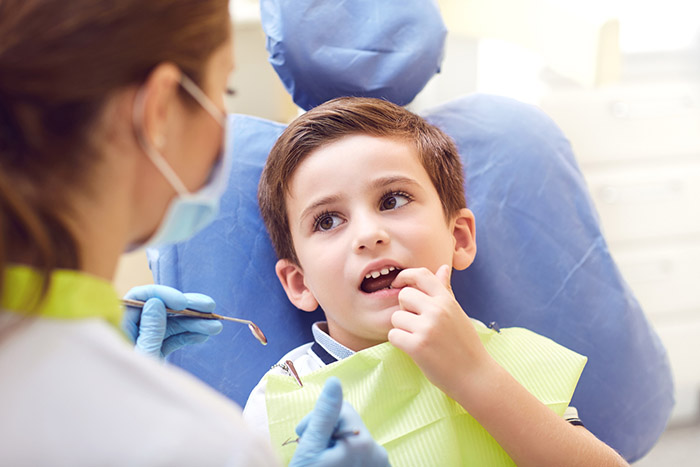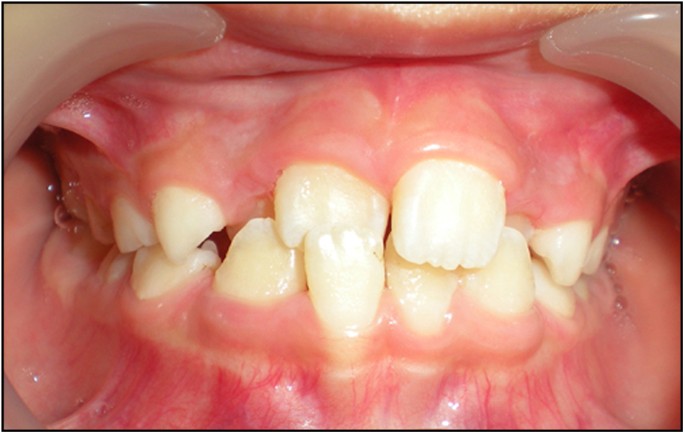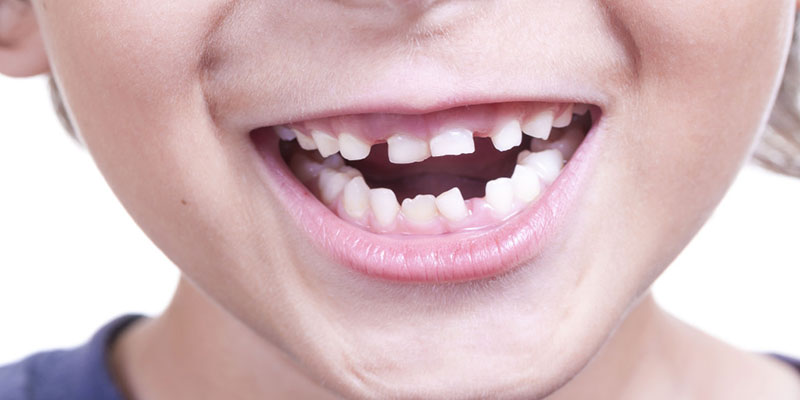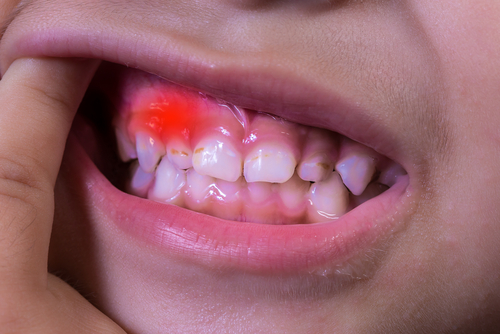
Good oral hygiene habits are essential for maintaining healthy teeth and gums, especially in children. It’s important to start teaching children about oral hygiene at an early age so that they can develop good habits that will last a lifetime. Unfortunately, many children suffer from common dental problems that can lead to discomfort, pain, and more severe dental problems. In this blog, we will discuss some of the most common dental problems in children and how they can be prevented.

Tooth decay is one of the most common dental problems in children. It is caused by bacteria in the mouth that produce acids that eat away at the tooth enamel. Poor dental hygiene, excessive sugar consumption, and lack of fluoride are the main contributors to tooth decay. Symptoms of tooth decay include sensitivity to hot and cold temperatures, toothaches, and visible cavities.
To prevent tooth decay, children should brush their teeth twice a day with fluoride toothpaste and floss daily. Parents should also limit sugary foods and drinks, encourage healthy eating habits, and ensure their children receive fluoride treatments from their dentist.

Malocclusion is a dental problem that affects the alignment of the teeth and the way the upper and lower teeth fit together. It is a very common dental problem in children. This can cause problems with chewing, speech, and appearance. Malocclusion is often hereditary but can also be caused by thumb-sucking, pacifier use, or other habits that affect jaw development.
In some cases, malocclusion may require orthodontic treatment, such as braces or clear aligners, to correct the alignment of the teeth. In other cases, simple lifestyle changes can help prevent the problem from worsening, such as breaking thumb-sucking habits and limiting pacifier use.

Thumb-sucking is a natural reflex for infants and young children. However, prolonged thumb-sucking can cause problems with the growth and development of the teeth and jaws. This can lead to malocclusion, speech problems, and even changes in facial structure.
It’s important for parents to discourage thumb-sucking as early as possible. Encouraging other forms of self-soothing, such as using a favorite stuffed animal or blanket, can help distract the child from the urge to suck their thumb. If the problem persists, parents can seek guidance from their child’s dentist or pediatrician for additional strategies to break the habit.

Tongue thrusting is when the tongue pushes against the front teeth while swallowing. This can cause misalignment of the teeth and affect speech. Tongue thrusting can be caused by improper swallowing habits, which can be due to a variety of factors, including allergies, nasal congestion, or oral habits.
To prevent tongue thrusting, parents should encourage their children to swallow properly by keeping their lips closed and using the tongue to push against the roof of the mouth. If the problem persists, parents can seek guidance from their child’s dentist or pediatrician for additional strategies to correct the habit.

Bruxism is the grinding or clenching of teeth, often during sleep, which can cause damage to the teeth and jaw muscles. This problem is often caused by stress, anxiety, or other emotional factors, and can also be a side effect of some medications.
To prevent bruxism, parents should encourage relaxation techniques, such as meditation or yoga, to help reduce stress and anxiety. Parents can also talk to their child’s dentist about using a mouthguard at night to protect the teeth and jaw from damage.

Gum disease in children is caused by poor oral hygiene and can lead to inflammation, bleeding gums, bad breath, and loose teeth. It can be diagnosed through a dental exam and treated with improved oral hygiene practices, professional cleanings, and scaling and root planing. Prevention includes regular dental checkups, a healthy diet, and good oral hygiene habits.